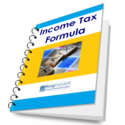Many people are aspiring to retire early. The big question is: How to get a steady cash flow every month once you retire?
The traditional approach is to park money in fixed deposits (FDs), and use the interest every month to take care of day-to-day expenses.
But is it the right alternative? Can it sustain the cash flow till you live? This article shows that a term / fixed deposit (FD) is not the best choice for someone retiring early.
| When you are working, you get a steady cash flow every month. You use that to take care of the day to day routine expenses, and for non-recurring expenses (like buying a fridge). You use the remaining amount for investments. |
When you retire, the expenses remain more or less the same. But there is no steady, constant income stream.
Then, how do you take care of the expenses? The idea is to create an income stream that would help you take care of these expenditures, and continue to help you take care of such expenditures throughout your lifetime.
The conventional approach – Term / Fixed Deposit (FD)
The traditional approach is to park money in fixed income instruments like fixed deposits (FDs), and use the interest every month to take care of day-to-day expenses.
But is it a good alternative for someone retiring early? Let’s analyze.
Characteristics of a Fixed Deposit (FD)
In a term or fixed deposit, you give a certain amount to the bank for a fixed period of time. In return, the bank gives you a fixed interest, either periodic (monthly / quarterly / yearly) or cumulative.
At the end of the fixed period, you get back the exact same amount that you originally invested.
How would it work for a retired person?
Say you have a retirement corpus of Rs. 25 Lakhs when you retire at the age of 60 years.
The prevailing rate of interest (in August 2008) on fixed deposits is around 10%. This is on the higher side, and we can’t assume to get it throughout our retired life.
Let’s assume that you can get around 8% per year consistently for your entire retired life. Thus, on Rs. 25 Lakhs, you get Rs. 2,00,000 every year as interest, which is Rs. 16,667 per month.
(Download the spreadsheet illustrating the example discussed in this article – you can change the values to fit your situation, so that you can see the numbers for your own retirement!)
(You need to be logged-in to download the spreadsheet. For free registration that takes less than a minute, please click here. To know the benefits of registration, please click here.)
Is this amount sufficient to sustain your family after retirement? Well, it should be – otherwise it just means that you didn’t save enough for your retirement.
Let’s say your monthly expense is Rs. 15,000. So, this amount would be good for you.
But even if this amount is enough to sustain your family now, would it be sufficient to provide for you and your family for your entire retired life?
The impact of inflation
Remember, the cost of all goods and services increases every year due to inflation. This means that your monthly expenses would also increase every year – even if you continue consuming the same things!
Would an FD be able to cover you for this?
If the rate of inflation is 6%, the amount you would need every month would jump to Rs. 18,937 in just 5 years! And then, the interest on your FDs would not be able to cover your expenses! And this gap would continue to increase every year…
So, what options do you have? There are two things that you can do if you want to invest in FDs:
1. Provide for a higher starting amount
(Download the spreadsheet illustrating the example discussed in this article – you can change the values to fit your situation, so that you can see the numbers for your own retirement!)
(You need to be logged-in to download the spreadsheet. For free registration that takes less than a minute, please click here. To know the benefits of registration, please click here.)
You save more for your retirement, so that the interest is good enough to last a long time.
Let’s continue with our example. When you retire at the age of 60 years, your expense is Rs. 15,000 per month.
With medical advances, the average life span of people is increasing every day. In any case, you need to be careful and provide for an adequate time post-retirement.
Let’s say you would live till the age of 90 years. What would be your monthly expense be at that time? It would be Rs. 81,276 per month, or Rs. 9,75,310 per year.
To get this amount at 8% interest, you would need a whopping Rs. 1,21,91,373! That’s Rs. 1.22 Crores!!
(Download the spreadsheet illustrating the example discussed in this article – you can change the values to fit your situation, so that you can see the numbers for your own retirement!)
(You need to be logged-in to download the spreadsheet. For free registration that takes less than a minute, please click here. To know the benefits of registration, please click here.)
It is not impossible, but do you think it is easy to save that much, just to make sure inflation doesn’t catch up with your earnings post-retirement? Aren’t better options available?
2. Draw some amount from your savings every year
Another option is to draw an amount equal to the shortfall from your retirement corpus.
Again, let’s see our example.
If you have a retirement corpus of Rs. 25 Lakhs, and you get a return of 8% per year on it, you would be able to support yourself through the interest only for 3 years.
After that, you would have to withdraw money from your corpus (or principal) to take care of the shortfall. This, in turn, would reduce you interest income, and you would have to withdraw even more the next year.
Thus, you would have to withdraw an increasing amount every year, and at some point in time, you would be left with absolutely no principal – you would have utilized your entire retirement corpus.
In our example, this happens in year 18. That is, if you retire at the age of 60 years, you would deplete your entire retirement saving when you turn 78 years old.
(Download the spreadsheet illustrating the example discussed in this article – you can change the values to fit your situation, so that you can see the numbers for your own retirement!)
(You need to be logged-in to download the spreadsheet. For free registration that takes less than a minute, please click here. To know the benefits of registration, please click here.)
Conclusion
As the illustrations show, both the methods are not appropriate – your money would not last for your lifetime!
And although I have talked about fixed deposits, the same logic applies to all fixed income instruments – Post Office Monthly Income Scheme (PO MIS), Provident Fund (PF), Public Provident Fund (PPF), Senior Citizen Savings Scheme (SCSS), National Savings Scheme (NSC), Kisan Vikas Patra (KVP), Bhavishya Nirman Bond, etc.
Implication on Early Retirement
We saw from the examples that:
1. You need a ridiculously high amount as your retirement savings: If you want to retire early, you would have to make this retirement amount stretch for even more years. This means you need an even higher amount as your retirement corpus!
Or,
2. You draw some amount from your savings every year: If you retire at 60, and the amount gets over at 78, imagine what would happen if you retire when you are 40 or 45 years old! Either the amount would get over too soon, meaning that you would have to work in your old age, or, again, you would need a very high starting amount.
What is the problem?
The main problem with fixed income instruments like FDs is that although the interest, or the return from the instrument, is somewhat linked to inflation, the principal is not.
To illustrate: When you invest Rs. 5 Lakhs in an FD for 5 years, you get an interest rate that is somewhat linked to the inflation rate, but after 5 years, you get the same Rs. 5 Lakhs back. The principal that you get back remains the same – it is not linked to inflation.
And in 5 years, the value of Rs. 5 Lakhs would have already gone down due to inflation! (At 6% inflation, it would be reduced to Rs. 3.74 Lakhs!)
And since the principal remains the same, the amount of interest you get also remains the same. And as we saw, this interest amount becomes grossly insufficient to take care of your expenses just a few years after your retirement.
(Download the spreadsheet illustrating the example discussed in this article – you can change the values to fit your situation, so that you can see the numbers for your own retirement!)
(You need to be logged-in to download the spreadsheet. For free registration that takes less than a minute, please click here. To know the benefits of registration, please click here.)
The Solution
If you want to retire early, you need to invest your money in avenues where not only the interest, but even the principal is linked to inflation.
The idea is to generate passive income that grows with time.
To know more about it, please come back to read “The power of passive income: How to fast-track your early retirement”.
Other articles you might be interested in:
- Permanent Account Number (PAN) for an NRI and a PIO
- You are 30 – Think of 50: Impact of inflation on your budget
- An Introduction to Reverse Mortgage
- Home Loan / Mortgage Insurance – What to Buy, How to Buy
- Change in interest rate: Impact on floating rate home loan, EMI and tenure
- All you wanted to know about Senior Citizen Savings Scheme (SCSS)
- When “at-par” is not so good: New Fund Offer (NFO) versus existing MF schemes
- Not Cash, Not Travellers Cheques: Use Travel Card
- Once again, banks hike interest rates for deposits and lending (loans)
- SEBI approves Application Supported by Blocked Amount (ASBA) for IPOs
- Missed the income tax return (ITR) filing deadline of 31st July?
- How to fill Income Tax Return Form 2 (ITR2) Instructions





